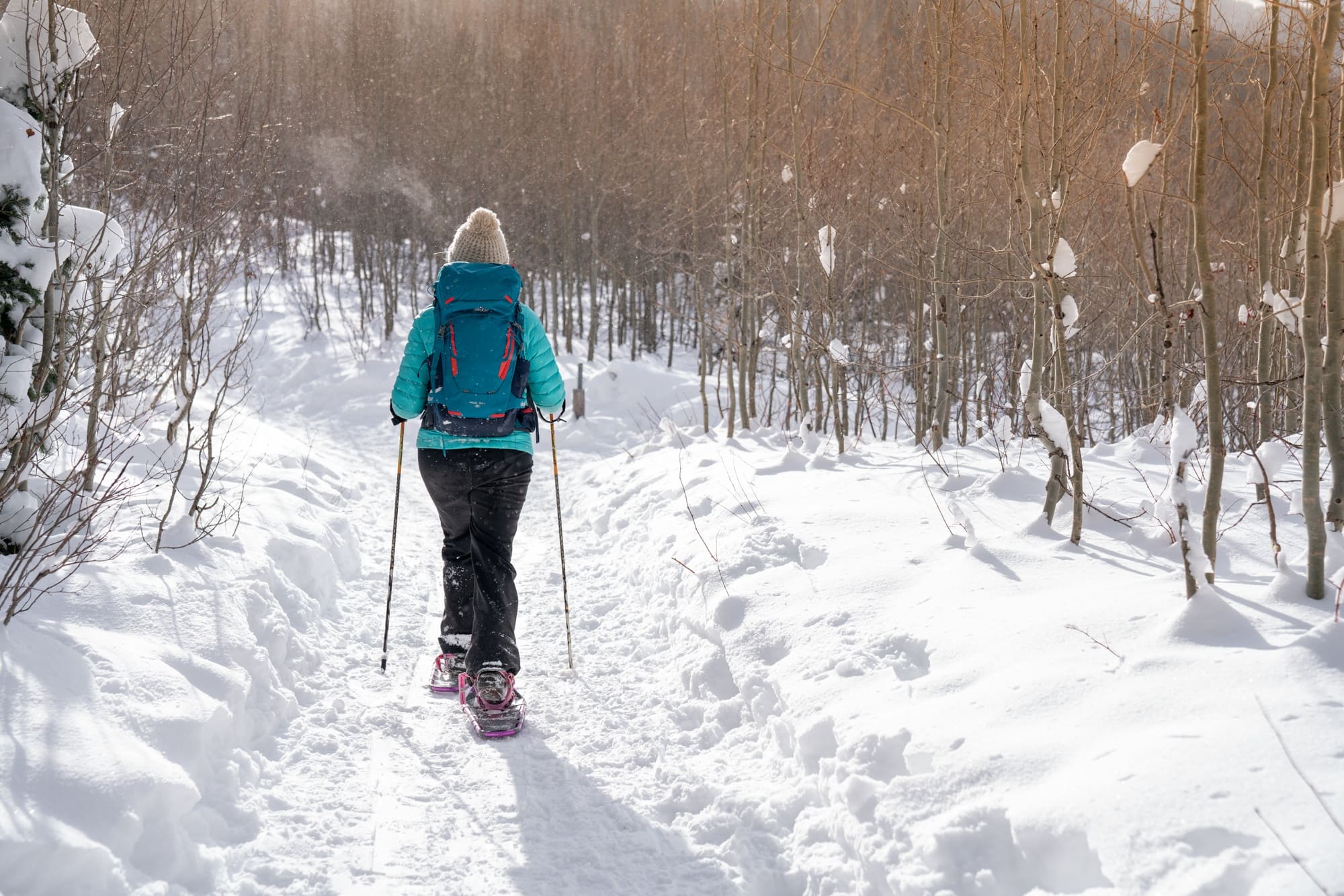You will need to build the front half of the snowshoe before moving on to making the back half. Snowshoeing techniques can range from simply strolling along a flat or gently rolling well groomed trail at a leisurely pace to carefully negotiating challenging and.
 How To Snowshoe Beginner Tips For Finding A Trail Gear More Bearfoot Theory
How To Snowshoe Beginner Tips For Finding A Trail Gear More Bearfoot Theory
When wintertime comes many hikers are apt to pack away their boots and backpacks until spring.

How to snowshoe. Its important to avoid areas that have avalanche potential. How to snowshoe uphill You should use your toe or instep crampons for grip when snowshoeing uphill and firmly place your feet on the snow as well as having your poles in front of you. Lacing the shoe is pretty easy to accomplish too.
Click for more details. How to start snowshoeing. A heel lift is a small horizontal bar you can raise that sits just an inch or two off the deck of the snowshoe.
The heel lift changes the angle of your foot slightly. Make sure your poles have a basket at the bottom so they dont sink into the snow. When youre first starting out go to hilly areas as opposed to mountainous areas.
Wear snow boots or warm waterproof hiking boots with gaiters or ski pants to keep snow and ice out while snowshoeing. By contrast snowshoes designed for off-trail hiking and mountaineering will often have more and larger crampons but will also be heavier. Some snowshoers also like to carry a small day backpack with a water bladder like the CamelBak Antidote Reservoir.
Tighten the front strap then the heel strap and finally the instep strap. They will be able to recommend a suitable trail for you to explore. There are different techniques depending on the conditions.
Go on your usual summer hiking trails in the winter for snowshoeing. If its too steep try to make your own switchbacks zigzagging back and forth up the slope. Those big metal spikes under your shoes when you put the snowshoe on are called crampons.
Its way easier to hike on an already packed down snowshoe trail than. Get to know the basic techniques when beginning snowshoeing such as ascent and descent traversing safety measures and how to choose the ideal snowshoes for your adventures. For this conundrum MSR invented the ultimate solutionthe snowshoe tail.
After cutting the pipes then comes the challenging phase that will require you to connect the pipes together. Try different snowshoe models to decide just how many crampons you need. You can use All Trails to find hiking trails.
Also make sure to pack plenty of snacks or a lunch depending on how long youll be out for. Get your snowshoe bindings comfortably adjusted by placing the ball of your foot over the top of the hinges. Tips for snowshoeing uphill In soft snow use the toe of your boot to kick steps into the snow.
If you do youll spend 80 of your time wishing you had bought the smaller size. One of the best ways to start snowshoeing is to rent a pair of flat terrain snowshoes from an outfitter. You can also post in local Facebook groups to find trails.
If 22-inch snowshoes suit you for most trail and snow conditions adding a pair of. To use them simply kick your foot into the snow as you climb a steep hill. If its icy and crusty use the crampons on the bottom of your snowshoe to bite into the hard top-layer of the snow.
MSR snowshoe tails allow you to take advantage a smaller base pair of snowshoes for optimal ease of walking and to add tails for more flotation on-demand. Snowshoes are built with crampons under foot. Snowshoeing for beginners is easy to pick up without any tutorials or lessons.
Many snowshoers like to use trekking poles for better stability and balance in rocky conditions. According to Snowshoe Magazine you get dehydrated faster by cold dry air so put a few water bottles in your backpack for your trip. How To Find a Snowshoe Trail.
This packs the snow down and digs the metal crampon spikes into the snow. Adjust straps to fit snuggly but dont make them too tight. Learn how to snowshoe with our simple step-by-step guide for beginners.
